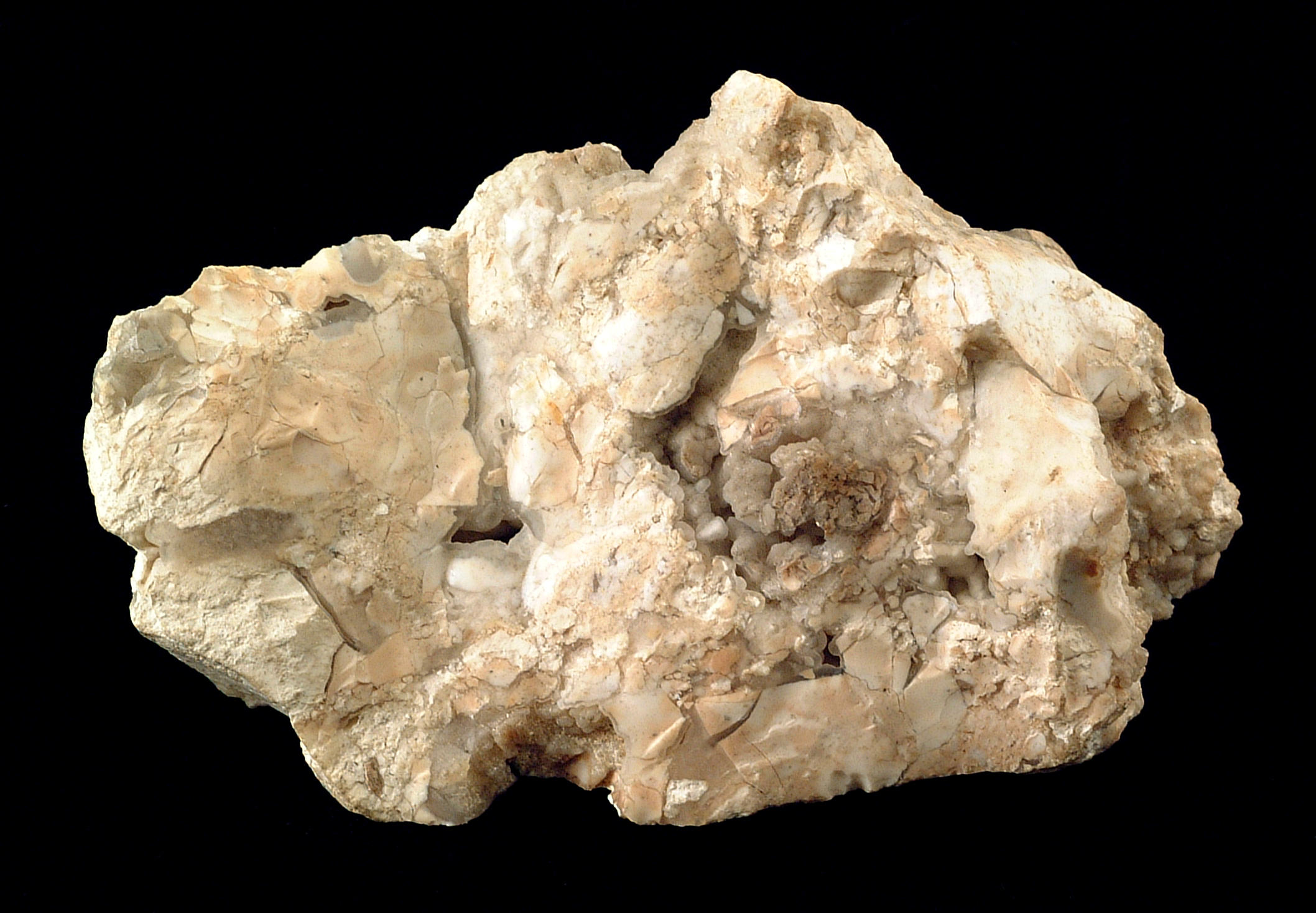| Title | Opal from Fluorine, Nevada |
|---|
| Description | This specimen, 11 cm across, is mostly white-tan opal. Minor quartz can be seen in a few places. Although the definition of “mineral” has become less rigorous in recent years, most mineralogists would not consider opal a mineral. Instead it is considered to be a “mineraloid” because its atoms are not arranged in a repetitive crystal structure. Opal's chemistry is SiO2·nH2O. The amount of water in opal is typically 5-10% but may be more. This water can help geologists determine the temperature of the host rock at the time the opal formed. Opal generally forms in sedimentary environments or as a secondary mineral in altered high silica igneous extrusive rocks. Some opal displays vivid “opalescence” which is the ability to refract and reflect specific wavelengths of light giving a “play of colors”. |
|---|
| Location | USA ▹ Nevada. Near Fluorine. |
|---|
| Photographer | Shannon Heinle. 2001-11-20. |
|---|
| Collection | University of North Dakota Mineralogy Collection #1643. |
|---|
| Key words | opal, mineraloid |
|---|
| Tech details | 340 KB. Hand specimen. Fujifilm FinePix S1Pro digital camera; 60mm AF Nikon micro lens. |
|---|
| GeoDIL number | 1835 |
|---|
 |
